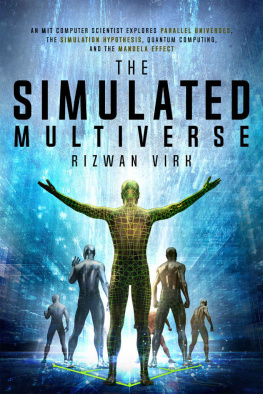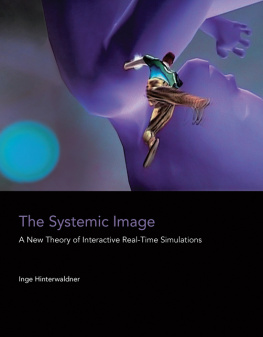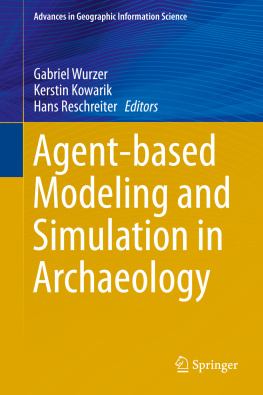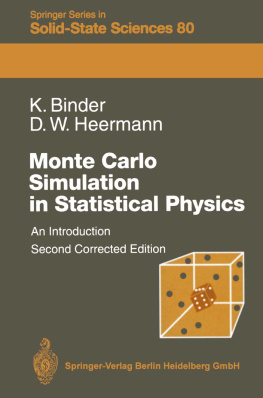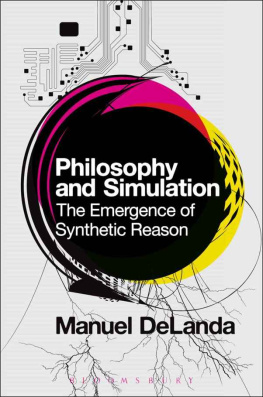It is quite rare to witness a radical change in sciencenot just the advent of a new topic or a new idea, and not just a change in a single field or scientific discipline, but a transformation of the way in which science works in general.
When faced with such challenges, societies and science often respond in one of two ways: (1) The first strategy is to increase the contrast. This makes a virtue of necessity. Familiar concepts and language games are used to survey the difference between old and new, and a comparison between the traditional and the novel is expected to provide information about the ongoing change (see Husserl ). The advantage of this strategy is that it does not require any presuppositions about what is essentially new. We validate our hypotheses on a familiar baseline and we are from the outset prepared to determine differences step by step. This, however, comes with certain disadvantages. Our results will be a measure of distance or difference, commonly expressed as similarity or dissimilarity, but they will not give us a profound understanding of the new kind of practice itself. Comparisons of old and new practices can only serve as a starting point to understand the new. (2) The second strategy is a risky one. It can be called experimental in the broad sense of the term and it tends to turn science into engineering and/or into art. Due to the lack of reliable knowledge about the ongoing transformation, we try to develop models. Science as art creates a merely possible basis for a new understanding. Novels, movies, and music map out strategies to cope with radical transformation.
From our (and not only our) point of view, computer simulation is radically changing science in general.and a dispositif , in which thinking, decision-making, and understanding itself are shaped.
The two responses mentioned above can be witnessed in current debates on simulation sciences. A lot of scientific literature (ours partially included) revolves around the question of whether computer simulations are more similar to experiments than they are to theory and argumentation, or vice versa. By inappropriately mythologizing computers, these narratives complicate our understanding.
How might such shortcomings be resolved? Bearing in mind that the strategic options for responding to ongoing transformations are limited, it may be useful to reconsider some of the preliminary decisions and to reorganize the collaborative research on computer simulation step by step. This is the guiding idea of the Science and Art of Simulation series (SAS). Its intention is to enable theoretical work on the basis of possible (and possibly appropriate) conceptual frameworks. Furthermore, its aim is to open up perspectives for improved hands-on research on computer simulation. To that end, SAS connects science and art in a threefold manner:
The artsunderstood as the humanities, social sciences, and philosophyenter into a more comprehensive exchange with practitioners of computer simulations. In addition to epistemological perspectives, the SAS series addresses normative, political, historical, and aesthetic questions.
Artunderstood as a craft put into action by practitionersis related to the methods and procedures described in theory. For this reason, the tension between the science and engineering of computer simulations, between epistemology and technology, as well as between theory and practice, takes center stage. In addition to such an accompanied research, the SAS series offers practitioners a collegial and occasionally critical voice.
Artunderstood as skill or artistry to reflect and make decisions based on the outcome of computer simulationsis considered in social and political contexts. In addition to the science and practice of computer simulation, the SAS series explores the possibilities of relating to computer simulations from a social or political point of view.
The High-Performance Computing Center in Stuttgart (HLRS) is the ideal home for the SAS enterprise. With around a hundred engineers, scientists, mathematicians, and computer scientists, it is one of the global pioneers in computer simulation. The newly founded Department for Philosophy of Computer Simulations at HLRS, consisting of four Ph.D. students and two postdoctoral researchers, enables interaction between disciplines which are normally separated and offers insight into the practical side of simulations studies and high-performance computing. Together with the Department of Philosophy at TU Darmstadt, which contributes its expertise in the philosophy of science, technology, and engineering, we have founded the complementary SAS workshop series, which attracts an interdisciplinary group of scholars. Every fall, computer scientists, engineers, historians, and social scientists meet philosophers researching the science and art of simulation. In the spring, a second SAS workshop series, run in collaboration with Nicole C. Saam (University Erlangen-Nuremberg), focuses on sociological issues in computer simulation.
The first volume of the series addresses three topics at the interplay of the science and art of simulation:
How to Explore Computer Simulations?
Philosophy began devoting attention to computer simulations at a relatively early stage. Since then, the unquestioned point of view has been that computer simulation is a new scientific method; the philosophy of simulation is therefore part of the philosophy of science. The first section of this volume discusses this implicit unchallenged assumption by addressing, from different perspectives, the question of how to explore (and how not to explore) research on computer simulations. Scientists discuss what is still lacking or considered problematic, while philosophers draft new directions for research. They explore the art of exploring computer simulations.
How to Understand the Results of Computer Simulations?
The results of computer simulations are integrated into both political and social decisions. It is implicitly assumed that the more detailed, and consequently more realistic, a computer simulation is, the more useful it will be in decision-making. This idea is by no means justified. Different types of computer simulations must be differentiated, which in turn requires the specific skill of understanding computer simulation results. The articles in this section examine the capabilities and limits of simulation results in political and social contexts, exploring the art of understanding computer simulation results.
How to Gain Knowledge Through Computer Simulations?
The advent of computer simulation in scientific practices today challenges the order of science. What kind of knowledge is gained through computer simulations is the key question of this section. Computer simulations are usually compared to experiments or to arguments. The transformation of our traditional scientific notions might be more challenging than expected. Ideas are put forward in the third section to conceptualize the art of knowing through computer simulations.


